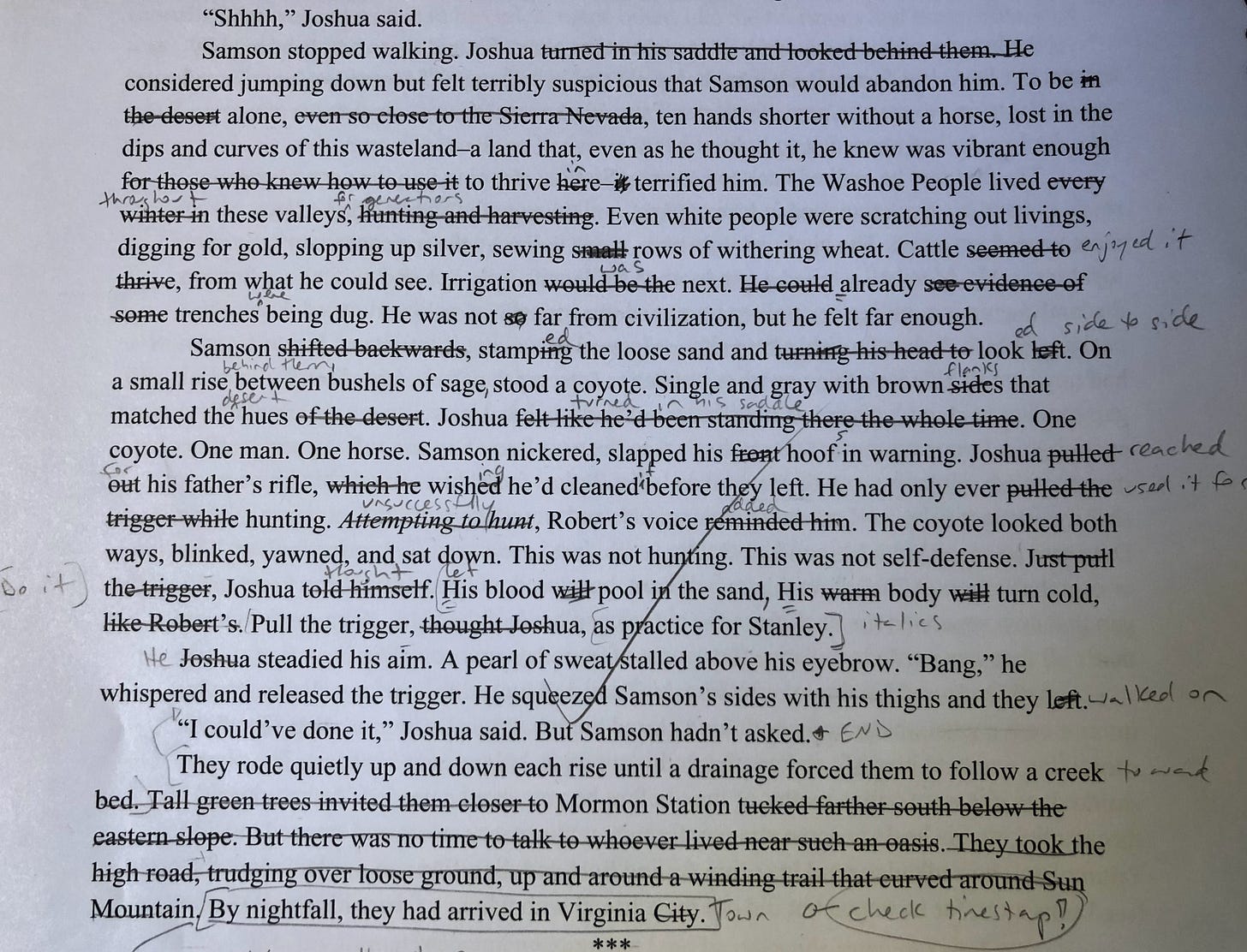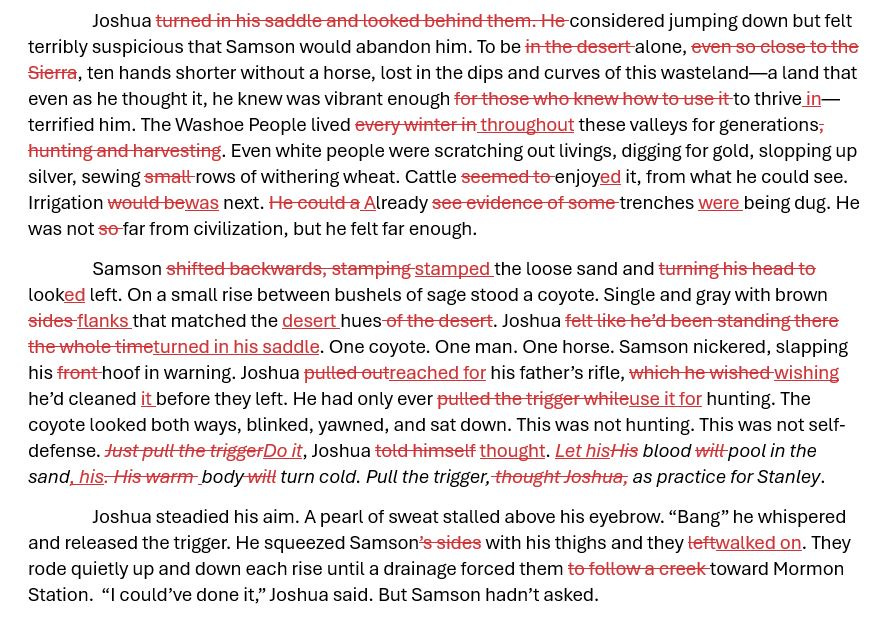Trimming the Fat
The steak has been eaten, the thrill of typing “The End” has faded, and the reality of book selling has set in. Every week, I send 2-3 query letters to agents, which is a one-page summary that miraculously captures the essence of my entire novel, a professional bio, and ideally some punchy hook that makes the agent love this letter more than the five hundred others she received this week. Writing a query letter feels as hard as writing the book.
Meanwhile, I’m mercilessly editing my manuscript. It’s like entering the big leagues holding my fifth-grade mitt held together by shoestring—there’s no room for mistakes. In book selling, there’s no room for unnecessary words.
When I said my novel was finished, I meant that the plot is solid. The characters are doing what I’ve asked. The structure is how it should be. But the words? Well… some sentences can still be perfected.
I need to trim the fat. Don’t be mistaken. I’ve been trimming the fat of this thing for years. But sometimes trimming has meant adding a new scene or inserting a historical factoid here or there.
This version of editing is like doing double days, or perhaps saying no to that second scoop of ice cream (you pick). Can you use three words instead of five? Do it. Do you need that extra adjective? Cut it.
My Objective? Cut 6,000 Words
The thing about writing is it’s never quite finished. I’m determined to get this 106,000-word beast down to 100,000 words. Can I cut 6,000 words from 300 pages? I think so… Why do I need to? Because industry suggests that first-time novelists should aim for the 100k mark, and because it’s good practice in tightening my writing wherever possible. I truly want every single sentence to shine.
Editing can verge on obsessive, but it’s part of the writing process. Have you ever read a book and thought, that guy (ahem Immanuel Kant) needed an editor. These days, publishers expect the writer to do much of the editing, fact checking, sensitivity readings, etc. before loaning out their own precious editors.
Exhibit A: 56-Word Reduction
Below is the sample passage from above, retyped and with edits in red to show how trimming the fat looks like for me. I whittled 334 words down to 278 words on one page. Go ahead, read it. See which version you like best.
This scene has endured many edits, but some sentences (I’m pleased to admit) have never changed, like that last line. I love that line so much I went back to the beginning and added Samson as a character just so I could keep this line in here.
Editing doesn’t mean keeping the fancy ten-cent words. It means cleaning up sentences by removing the clutter, the filler, the unnecessary fluff. A published book, after all, showcases only the good stuff.







yep, you described the task perfectly. As hard a process as it is to start, it is so satisfying to see the results. Once you get into the groove it seems to get easier...
So glad I'm not alone in editing. And this is a great way to promote your book.